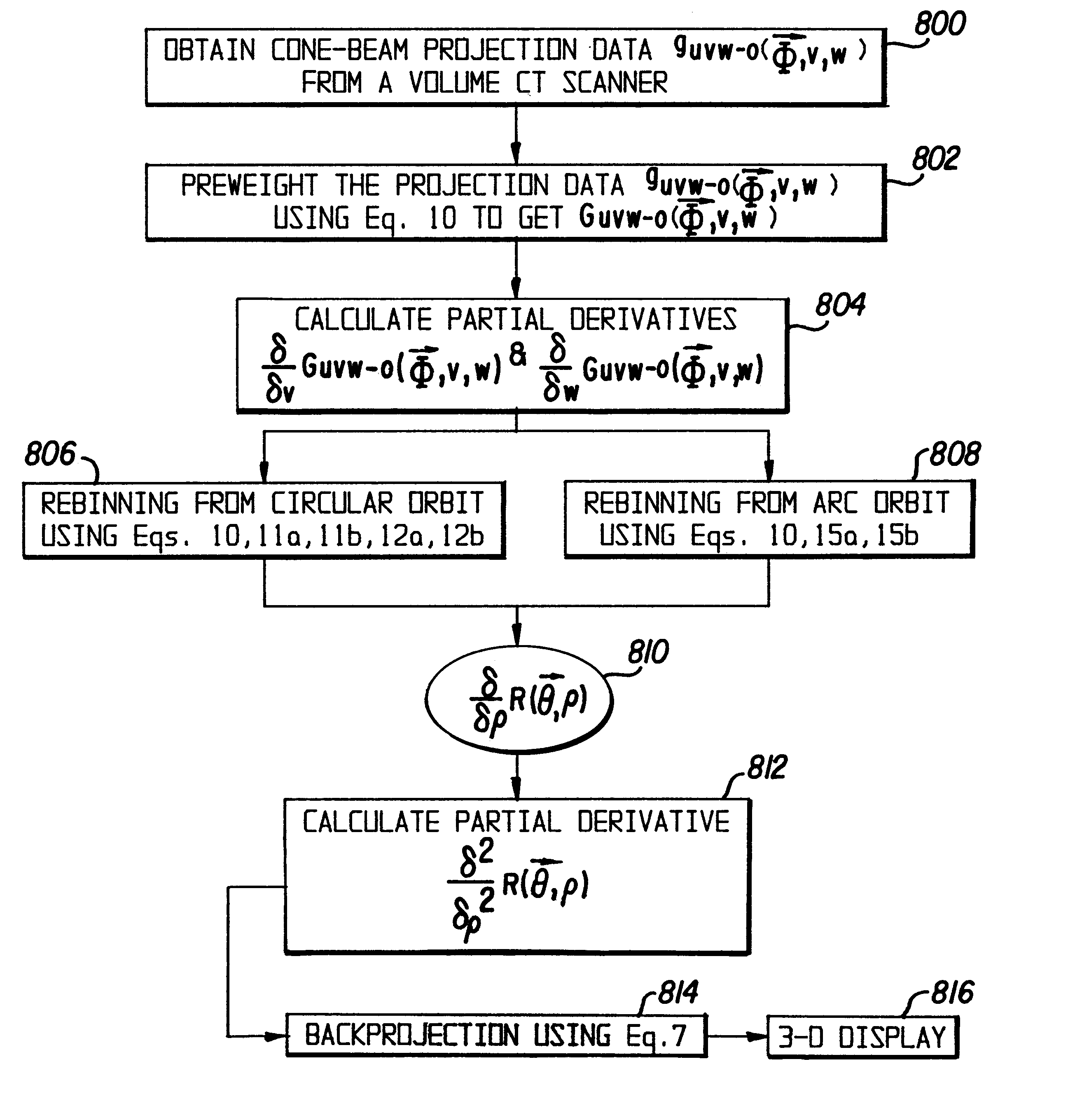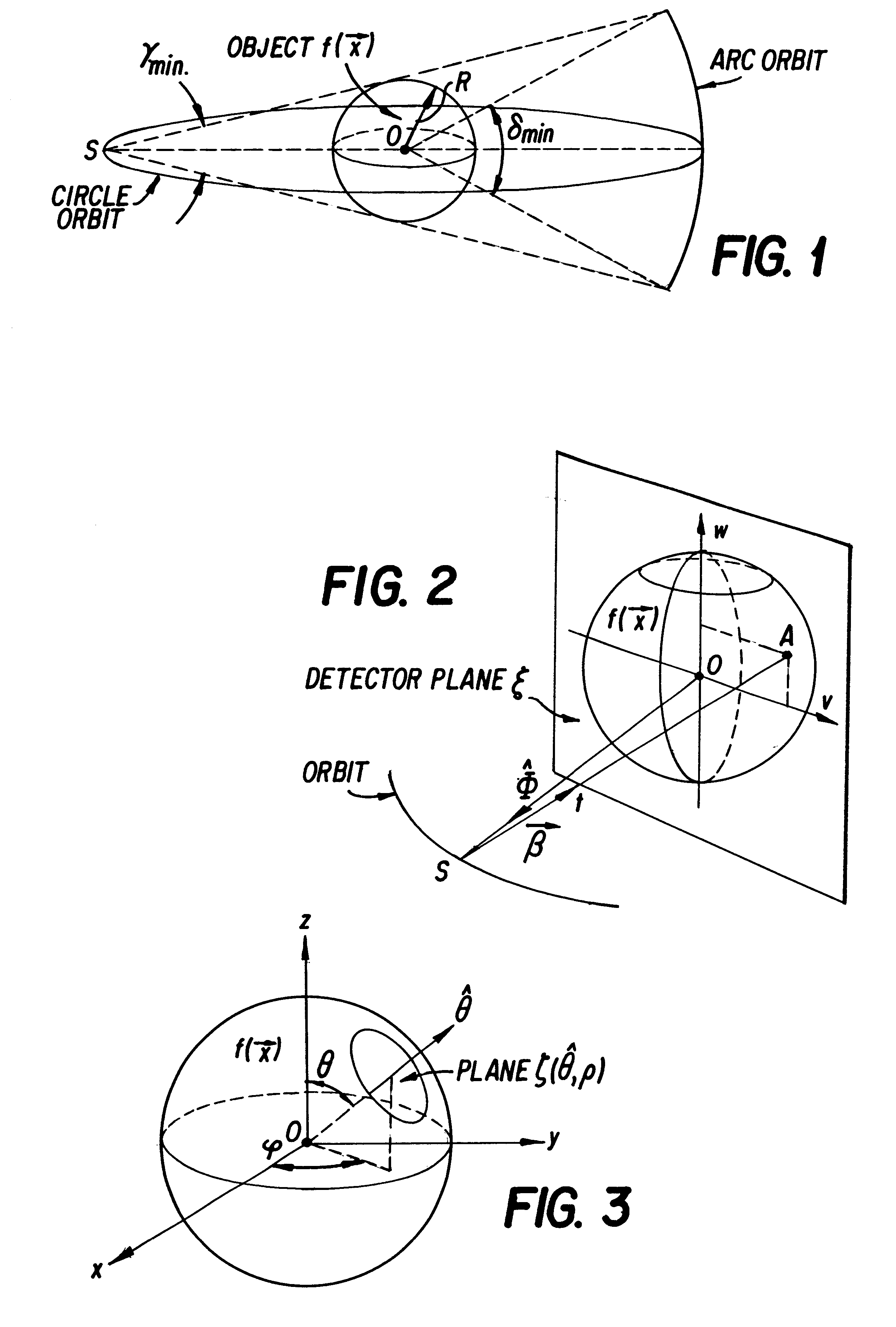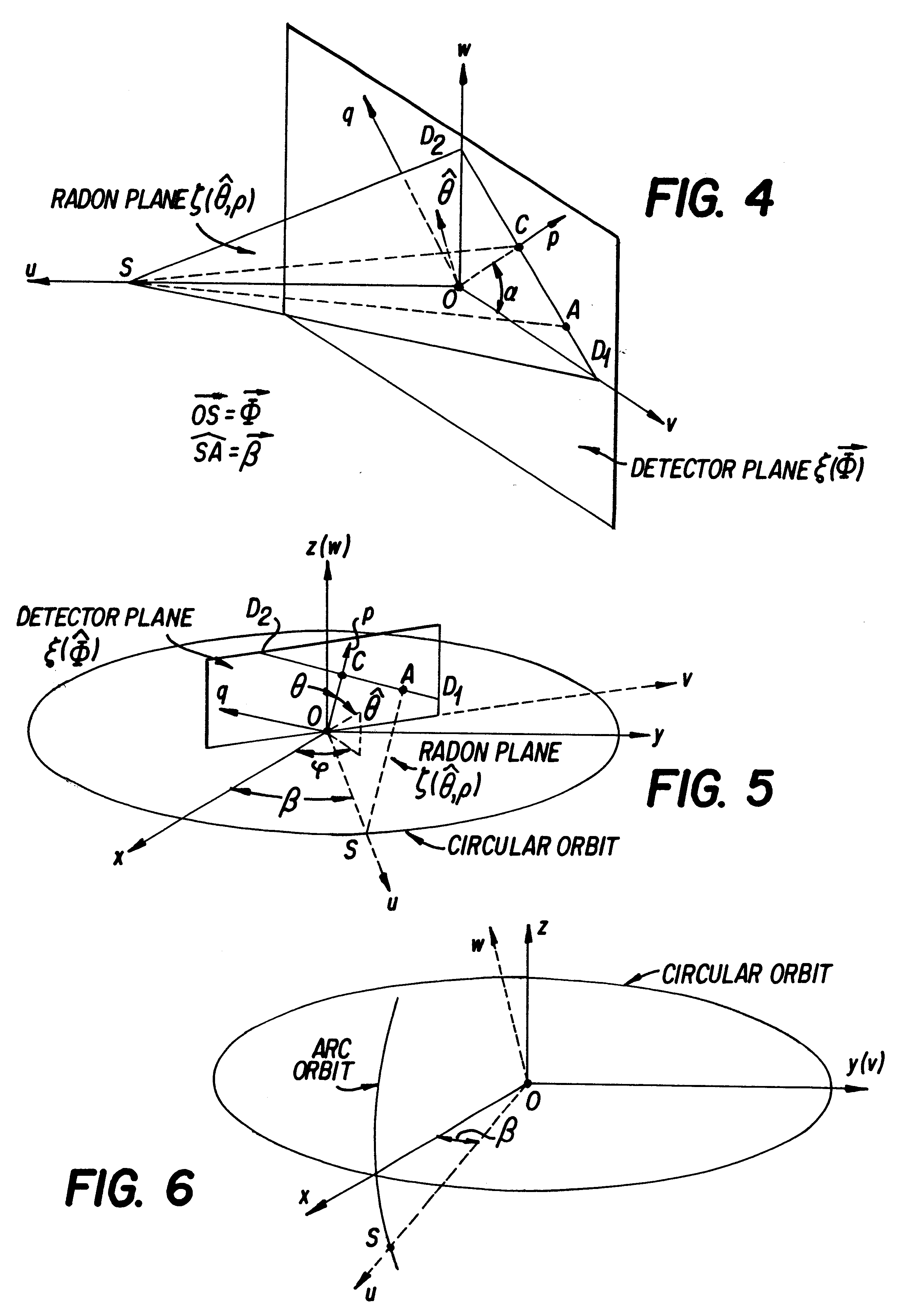Conventional
CT scanners use a fan-shaped x-ray beam and one-dimensional detector in order to reconstruct a single slice with a
single scan of an object However, current
CT technology is limited by a trade-off between high longitudinal resolution and fast volume scanning.
Single circle cone-beam geometry, in which the source always lies on a circle, cannot provide a complete set of data to exactly reconstruct the object.
's
algorithm causes some unavoidable
distortion in the non-central transverse planes, as well as resolution degradation in the longitudinal direction.
Thus, errors can be introduced by the implementation of the Gangreat method that can be greater than those produced using the Feldkamp, et al. method and such errors are not correlated with the cone-
beam angle.
However, such an integer requirement condition is too restrictive for practical application since the only known source point geometry which meets that condition is a straight line.
It cannot result in exact reconstruction and it is not acceptable in many clinical applications when the cone angle is large.
The incompleteness of the projection data results in some unavoidable blurring in the planes away from the central z plane and a resolution loss in the z direction (i.e., Feldkamp, et al.
The
reconstruction error due to the incompleteness of the projection data could be up to 50% of the
signal when using Feldkamp, et al.
Projection images using such standard projectional techniques do not provide sufficient information with which to detect and completely characterize all vascular lesions.
Obviously, an inappropriate choice of intervention based on improper knowledge of the patient's
anatomy can lead to unnecessary interventions, a sub-optimal outcome, injury or death.
Second, IA-DSA images are of reduced usefulness due to vessel overlap, particularly when non-selective injections are used.
However, even with multiple views, the number of views is limited, which often results in non-detected lesions because of the failure to achieve orthogonal projection and overlap.
Consequently, the angiographic procedure can become prolonged, increasing patient morbidity from lengthened catherterization time, increasing contrast as well as the
radiation dose, while also increasing procedure costs.
There is also an added risk of complications related to
percutaneous cannulation of an
artery and the manipulation of the IA catheters and wires in critical vessels which are often affected by
vascular disease.
The risk of procedure related vascular injury and
stroke is also present, with major morbidity.
However, in addition to the shortcomings inherent with all types of DSA, there are two additional important technical deficiencies which are specific to IV-DSA.
Second, there is an inability to attain a sufficiently
high concentration of contrast media through intravenous injection to overcome the
quantum noise inherent in the DSA technique.
Due to those deficiencies, the resulting image is generally of
poor quality and, thus, IV-DSA has become an infrequently used clinical technique.
Such techniques have been only partially successful in reducing the severity of
motion artifacts and in improving problems with vessel overlaps.
One of the drawbacks of IA-VTDA is that it is based upon IA injections, which are generally much more invasive than IV injections.
One of the difficulties of using IV-VTDA in place of IA-VTDA is that IV injections result in a much lower
signal compared to IA injections.
First, the long volume
scan time of CTA limits the rate of
contrast injection and at least a 30 second breathhold is required by the patient Therefore, CTA is more sensitive to
patient motion than IV-VTDA techniques.
Also, due to tube loading limitations, the resolution in the section direction of CTA is practically limited, and small-vessel resolution may be limited by partial volume effects.
Furthermore, IV-VTDA can also be used for lower extremity
angiography where spiral CTA cannot be used because of the limited tube capacity and total amount of contrast media which can be safely administered to a patient.
However, current MRA procedures have some deficiencies, including limited spatial resolution, overestimation of
stenosis and other artifacts, particularly at regions of flow disturbances, tradeoffs between making the
field of view (FOV),
signal to
noise ratio and spatial resolution and relatively long scanning times, which make it sensitive to
patient motion.
However, compared to IV-VTDA, a principle limitation of
ultrasound is the need for an appropriate acoustic window.
Intervening air or bone prevent the acquisition of
diagnostic information at a substantial number of potential vascular sites.
For that reason,
ultrasound has a primary diagnostic role in the carotid and lower extremity arteries, but is not useful in adult (closed fontanelle)
skull and central chest areas and is limited in use in the deep
abdomen.
 Login to View More
Login to View More  Login to View More
Login to View More 


